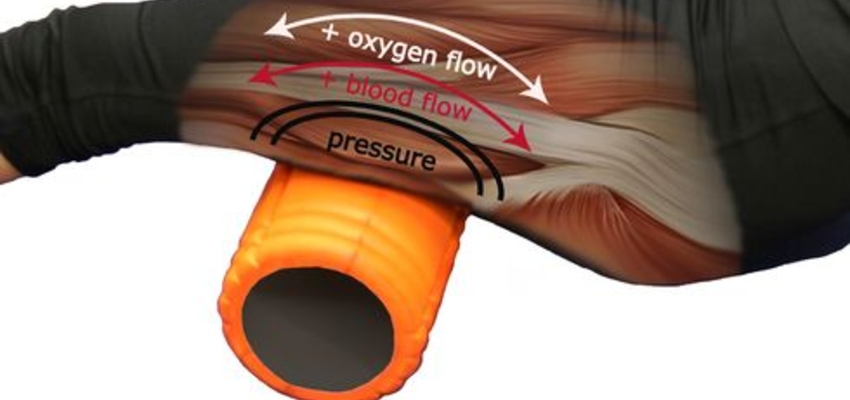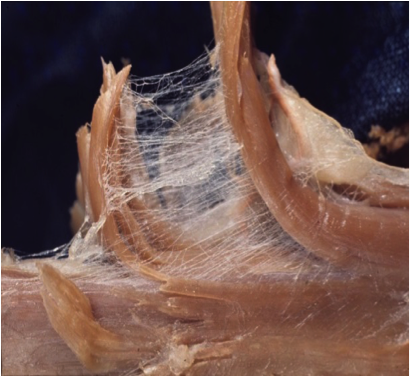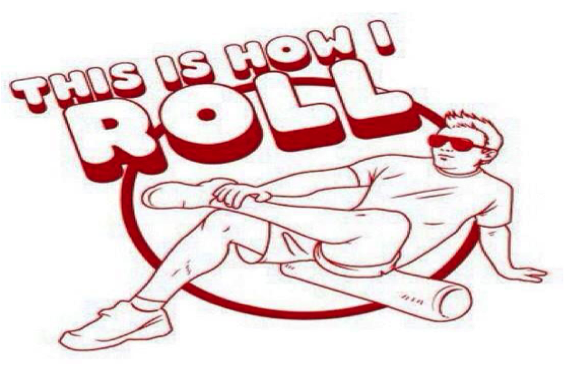
The Fundamentals of Foam Rolling (Self-Myofascial Release)
The Fundamentals of Foam Rolling (Self-Myofascial Release)
Written By: Michael Lefebvre of Olympia Fitness and Performance. B.S
Oftentimes When leading a client through a foam rolling series. I’ll get asked questions like “What’s the point of this? What is this even doing?” (Usually the discomfort naturally elicits a curse word or two but that’s beside the point). My initial response is usually “well, do you know what Fascia is?” Nine times out of ten the answer will be no. I occasionally have to remind myself that not everybody studied human sciences or took an anatomy class at one point. I always try giving a simple explanation but it doesn’t always resonate. More often than not they’ll look at me with that expression on their face as if they had just downed a tablespoon of vinegar that says “What the hell are you even saying?”
 Like so
Like so
Therefore, I wanted to put together this blog explaining the basic science behind foam rolling and why you should be foam rolling regularly.
In order to understand the purpose of foam rolling (SMFR), we need to first grasp an understanding of what Fascia is. Fascia is our biological framework, it is an organized arrangement of wet / aqueous soft tissue that surrounds every muscle in the body as well as every other bodily structure beneath the skin. To paint a mental picture, imagine a wet, spider-web like material weaving all throughout your body in a multitude of directions. Your fascia has no beginning or end point and it connects all regions of the body forming one cohesive unit.
 (Fascia interwoven between a dissected human muscle)
(Fascia interwoven between a dissected human muscle)
This network of soft tissue is what holds everything together and allows us to maintain posture, control body position, and move in harmony with our musculoskeletal system. Another major role of fascia is to protect our muscles, organs, nerves, blood vessels, bones, tendons, ligaments and cartilage from shock or trauma. Fascia has many sensory nerves called proprioceptors embedded within its matrix. Proprioceptors relay signals at remarkable speeds to the central nervous system keeping the brain updated with muscular tone, fluctuations in muscle length, and body positioning. These sensory nerves, which act to communicate with the brain, can be trained via muscular strength & endurance exercises, balance exercises and plyometric exercises. Fascia contains a variety of sensory receptors, but of particular importance, ‘Ruffini receptors’ act to decrease muscular tension in targeted areas when pressure is applied via SMFR techniques (foam rolling), which helps rid those aches & pains we all experience from feeling sore.
Just like anything else in our bodies, fascia can give us complications. We humans tend to be creatures of habit and this doesn’t bode well for optimal fascial structure and functioning. Fascia tends to adhere to adjacent areas when we don’t switch up our movement patterns enough or when we spend too much time in certain postures. For example if you’re a bus driver and you spend 50+ hours a week sitting behind the wheel with your shoulders hunched forward, the fascia not just in the shoulder region, but also in the surrounding areas will tighten and weaken some of its functional properties. Tight fascia causes pain, discomfort, muscle soreness, poor blood flow, decreased nerve conduction efficiency, lack of flexibility, and reduced joint range of motion. A PHD isn’t required to understand how all these things typically lead to some sort of injury. The good news is, fascia can be trained and favorably altered. The goal is to MAKE TIME FOR IT!
 Be more like this guy.
Be more like this guy.
Now that you know a thing or two
about fascia, the term Self-Myofascial
Release should make sense to you.
It is exactly how it sounds, a self-therapy technique providing fascial
release. Implements like foam
rollers, hand-held STK rollers, tennis balls, golf balls, lacrosse balls, thera-canes,
PVC pipes etc. can all be used to apply pressure and release tight fascia in
several body regions. Pain relief
is nice, but it isn’t the sole purpose of foam rolling. Faulty movement patterns are something
trainers see just about every day in a variety of exercises. Whenever I notice somebody having difficulty
performing proper form in a particular exercise and my verbal instruction
doesn’t seem to be the solution, my first instinct is to grab a foam roller or
lacrosse ball to mash away at the fascia in the areas at
fault. For example, if somebody is
having trouble getting out of anterior pelvic tilt I’m going to instruct that
individual to first roll out his or her hip flexors before working on their
glute strength as both hip flexor tightness and glute weakness can be part of
the cause of anterior tilt. It
would require much more time and effort performing SMFR techniques and other exercises
to fix an issue like this, but we have to start somewhere and the foam roller
is a great place to begin. It’s
also important to roll out some nearby areas (glutes, quads) because fascia is
a vast interconnected network, one tight area will ultimately affect other
areas. Really what we’re trying to
do is massage that tight fascia in those areas, deliver some good blood flow
and increase joint range of motion in the process.
I don’t want to spend too much time explaining ‘how to’ foam roll because there are literally hundreds of YouTube videos you could search for that’ll walk you through it. The idea is to give yourself a massage in a particular area of your body using a soft, or hard object in a smooth and slow manner. It’s extremely important to breathe while rolling and not to go fast. Going too fast will excite the sensory receptors and your muscles will remain tense, which defeats the whole purpose. A common question I get asked is whether it’s better to foam roll before or after a work out. In my personal opinion, there’s really no right or wrong answer. If you think about the benefits, it makes sense to roll out before and after a bout of exercise. Since foam rolling has been proven to increase joint range of motion as well as improving overall performance, why not roll out before a workout? Since foam rolling delivers blood flow and increases recovery speed, why not foam roll after a workout? Therefore I would suggest rolling out both before and after you “crush your workout”. For beginners, it’s suggested to use tools on the softer side to avoid pain and then progressively work your way onto harder materials.
Since the field of strength & conditioning is constantly updating its therapeutic techniques, within the next few years there will surely be some great advancements made and more studies conducted. As strength coaches, we take recovery and injury prevention extremely serious, so we strongly suggest you make sure foam rolling becomes an integral part of your workout regimen.
Key areas Muscle Groups to Apply SMFR Techniques
- Bottom of foot (Plantar fascia)
- Calves
- Hamstrings
- Glutes
- Piriformis
- Back (avoid the lower back)
- Shoulders (Traps)
- Lats (Latissimus Dorsi)
- Serratus Anterior
- Pectorals (Minor & Major)
- Hip Flexors
- Quadriceps
- IT Band
- Inner thigh (adductors)
Key benefits of Foam Rolling (SMFR)
- Increases joint range of motion (mobility) & flexibility
- Increases performance levels
- Improves posture
- Increases nerve conduction efficiency (signals sent to brain / spinal cord quicker)
- Breaks up scar tissue
- Delivers blood flow / improved circulation
- Reduces likelihood of injury, increases recovery speed
- Loosens up knots, relieves soreness
- Reduces Stress
- 1-Somerset, Dean. Fascia and it’s Role in Making You a Pain-Free Beast. 9 March. 2012. http://deansomerset.com/fascia-and-its-role-in-making-you-a-pain-free-beast/ Accessed September 2nd, 2017.
- 2-Cook, Gray. MOVEMENT. Functional Movement Systems, Screening – Assessment – Corrective Strategies. On Topic Publications, 2010.
- 3-Anderson, Marcia and Hall, Susan. Foundations of Athletic Training. Prevention, Assessment and Management. Lippincott Williams & Wilkins 2005.
- 4-Black, Ashley. What is Fascia? 2017. https://ashleyblackguru.com/what-is-fascia/ Accessed September 3rd, 2017.
- 5-Myers, Thomas. Thomas Myers Fascia 101. 20 Nov. 2014. https://www.youtube.com/watch?v=-uzQMn87Hg0 Accessed September 2nd, 2017.

